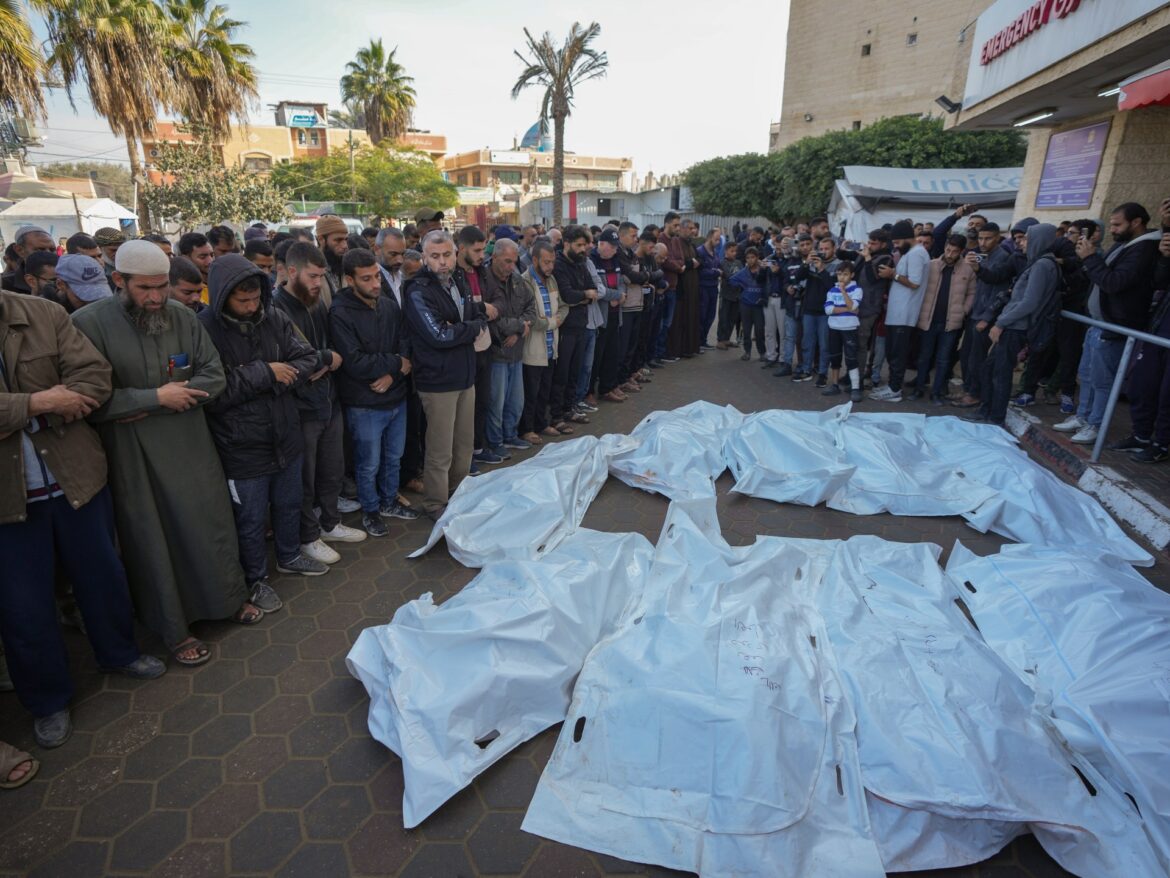A research study published by the Lancet medical journal on Friday reported that the death toll in the Gaza Strip during the first nine months of the devastating war that Israel continues to wage is about 40% higher, compared to the figures of the Ministry of Health in the Strip.
As of June 30 of last year, the Ministry of Health in Gaza reported that the death toll from the war amounted to 37,877, but the new study, which was based on data from the ministry, an online survey, and obituary data on social media sites, concluded with estimates indicating that the death toll as a result of war injuries In Gaza, it ranged between 55,298 and 78,525 martyrs during that period.
The best estimate of the number of martyrs in the study is 64,260, which means that it is 41% higher than the numbers published by the Ministry of Health for that period.
The study indicated that this number represents 2.9% of Gaza’s population before the war, “or about one in every 35” citizens in the Strip.
According to estimates by the UK-led group of researchers, 59% of the victims are women, children and the elderly.
The announced number is limited to injuries resulting from the war, and does not include deaths resulting from other factors such as lack of health care or food, nor does it include thousands of missing persons who are believed to be buried under the rubble.
The study stated that the ability of the Palestinian Ministry of Health to maintain electronic records of deaths had previously proven to be reliable, but had deteriorated in light of the Israeli military campaign that included raids on hospitals and other health care facilities and the disruption of digital communications.
Yesterday, Thursday, the Ministry of Health in Gaza announced that the number of martyrs of the Israeli aggression had risen to 46,060 martyrs and 109,378 injured since October 7, 2023.
3 approaches to statistics
The researchers used a statistical approach called “capture-recapture” analysis, which has previously been used to estimate death tolls in other conflicts around the world.
The analysis was based on data from 3 different lists, the first provided by the Ministry of Health in Gaza for bodies that were identified in hospitals or morgues.
The second list was taken from an online survey launched by the Ministry of Health, in which Palestinians report the death of their relatives.
The third list was based on obituary data published on social media networks such as X, Instagram, Facebook, and WhatsApp, whenever the identity of the deceased could be verified.
“We only kept in the analysis those whose death was confirmed by their relatives, morgues or hospitals,” the study’s main author, Zeina Gamal El-Din, an epidemiologist at the London School of Hygiene and Tropical Medicine, said in a statement to Agence France-Presse.
The researchers checked the three lists for any duplicate data.
“Then, we looked at the overlap between the three lists, and based on the overlap, you can get an overall estimate of the population who were killed,” Zeina added.
Patrick Ball, a statistician at the US-based Human Rights Data Analysis Group who was not involved in the research study, used “capture and recapture” methods to estimate the death tolls of conflicts in Guatemala, Kosovo, Peru and Colombia.
Paul told AFP that the well-tested technique had been used for centuries, and that researchers had made a “good estimate” regarding Gaza.
In turn, Kevin McConway, professor of applied statistics at the Open University of Britain, told Agence France-Presse that there is “inevitably great uncertainty” when making estimates based on incomplete data.
But he said it was “impressive” that the researchers used three other approaches to statistical analysis to verify their estimates.
“Overall, I find these estimates reasonably convincing,” he added.
However, there is something that would strengthen the hypothesis that the declared outcome of the war is less than the reality, as the research study did not include missing persons.
The United Nations Office for the Coordination of Humanitarian Affairs (OCHA) says that about 10,000 missing Gazans are believed to be buried under the rubble.
War can also indirectly cause loss of life, including lack of health care, food, water, sanitation, or disease outbreaks, all of which have been plaguing the Gaza Strip since October 2023.
In a controversial letter, published in The Lancet last July, another group of researchers cited the indirect death rate recorded in other conflicts to suggest that the death toll in Gaza could ultimately be estimated at 186,000.
The new study considered that these estimates “may be inappropriate due to clear differences in the burden of diseases before the war” in Gaza, compared to conflicts in countries such as Burundi and East Timor.
Zeina Gamal El-Din expected that “criticism would come from various parties” regarding this new research study, and denounced what she considered the “obsession” with the debate over death numbers, and said, “We already know that there are too many deaths.”



